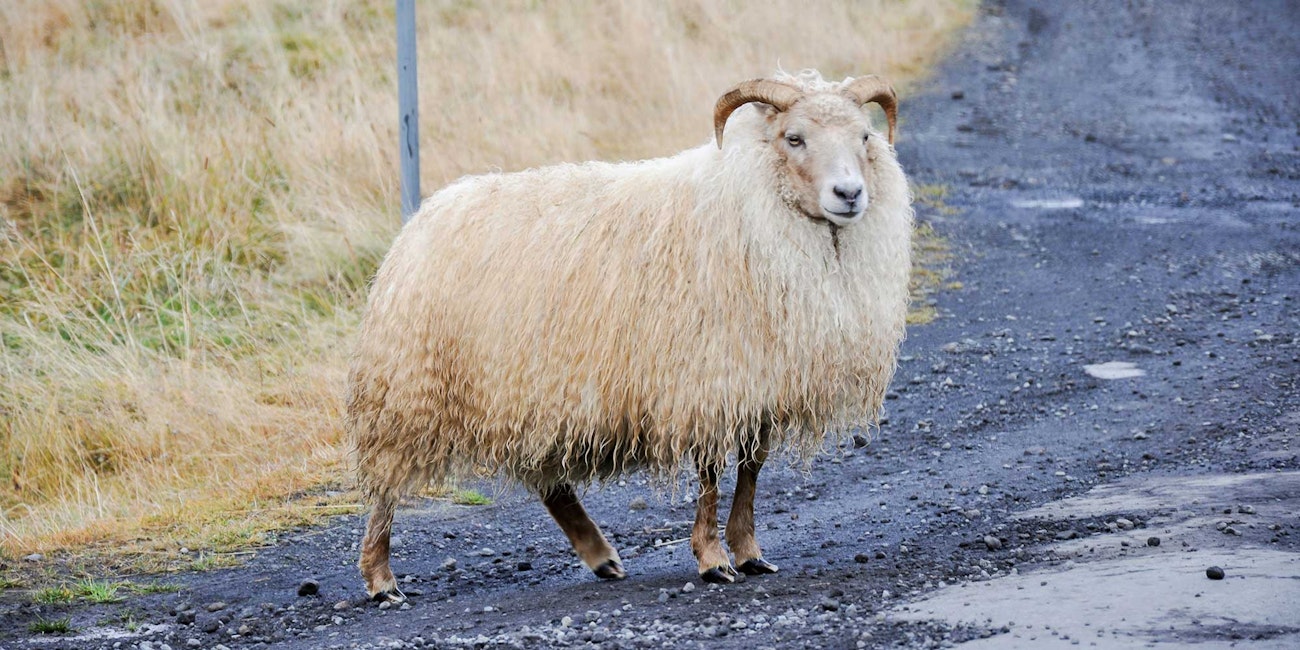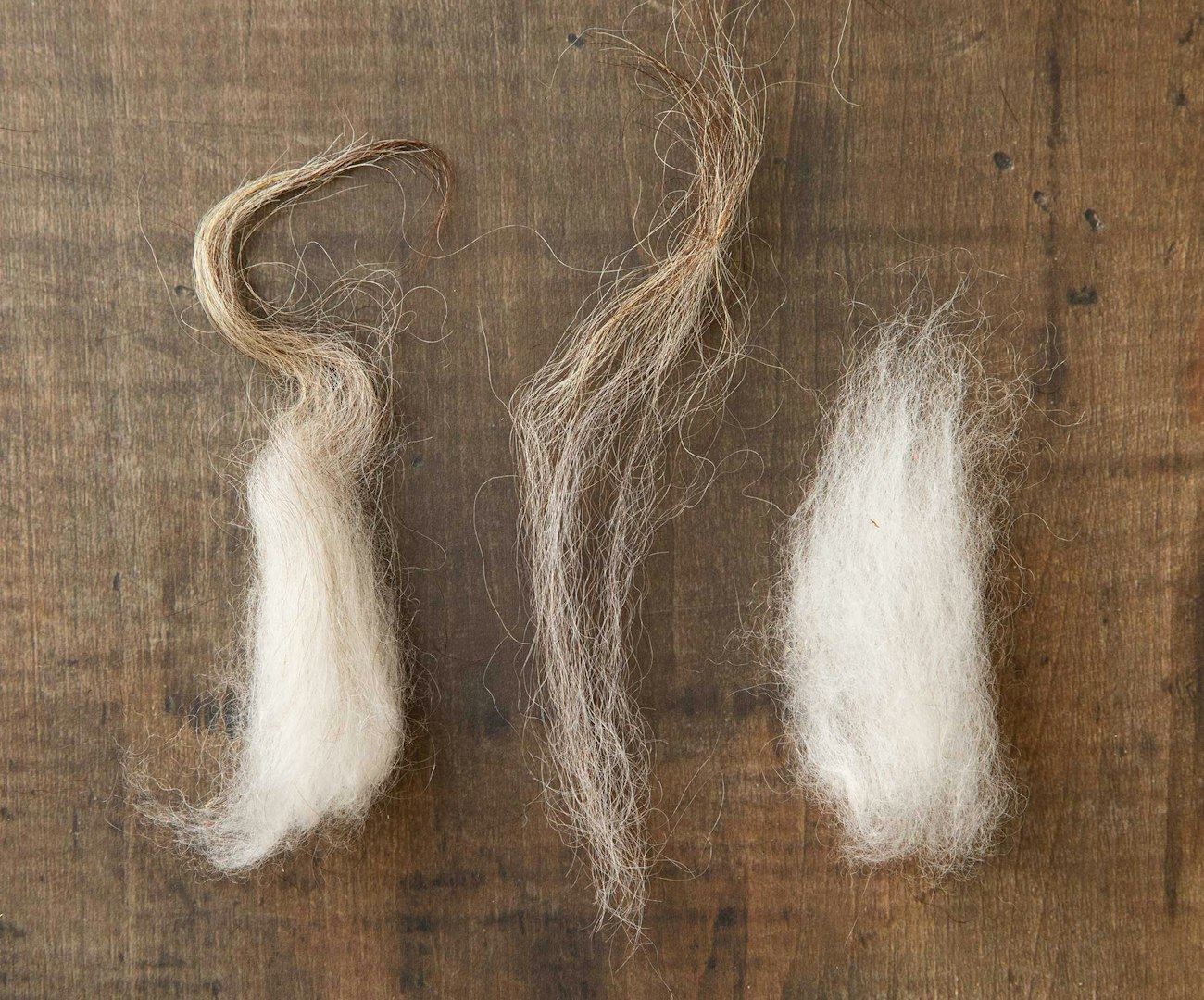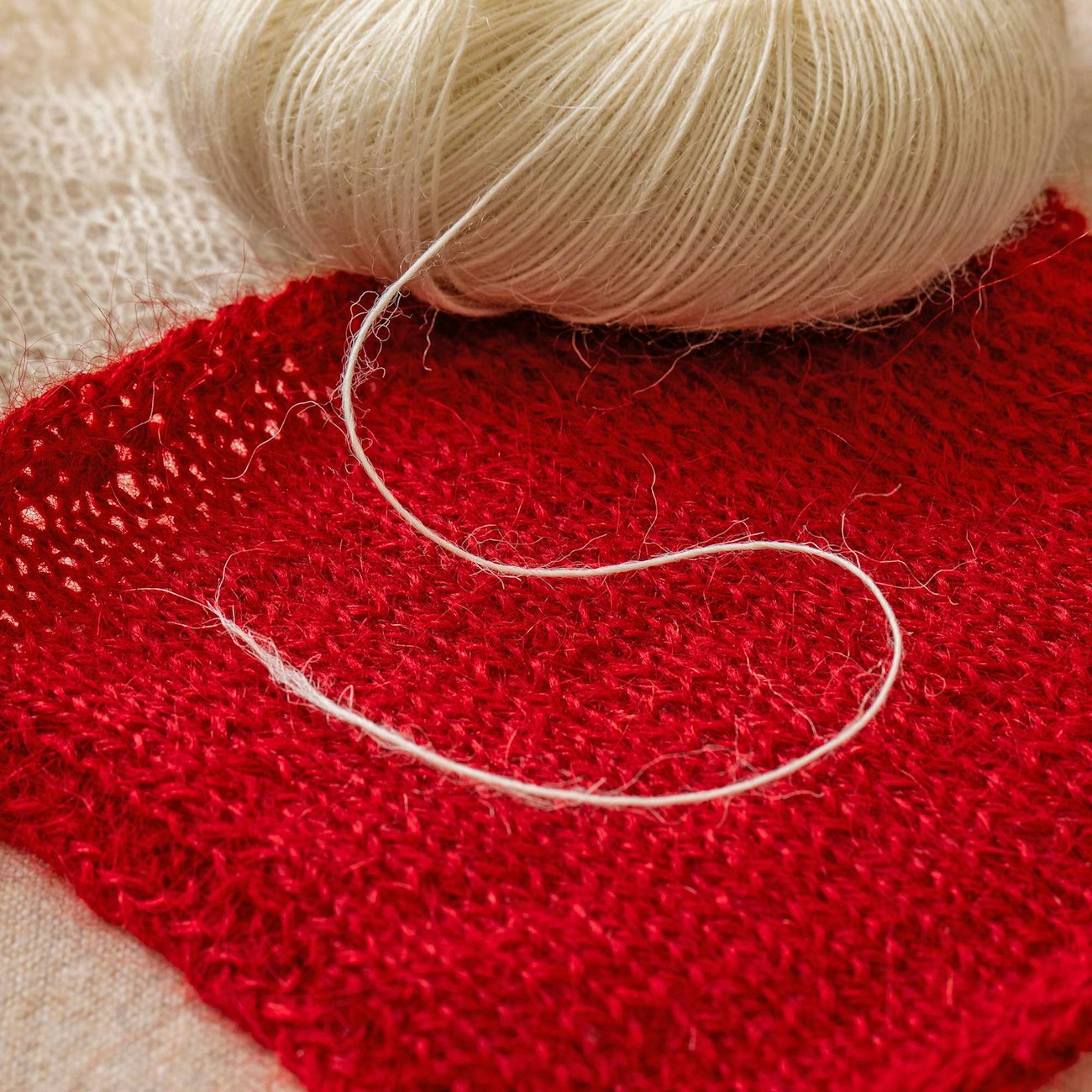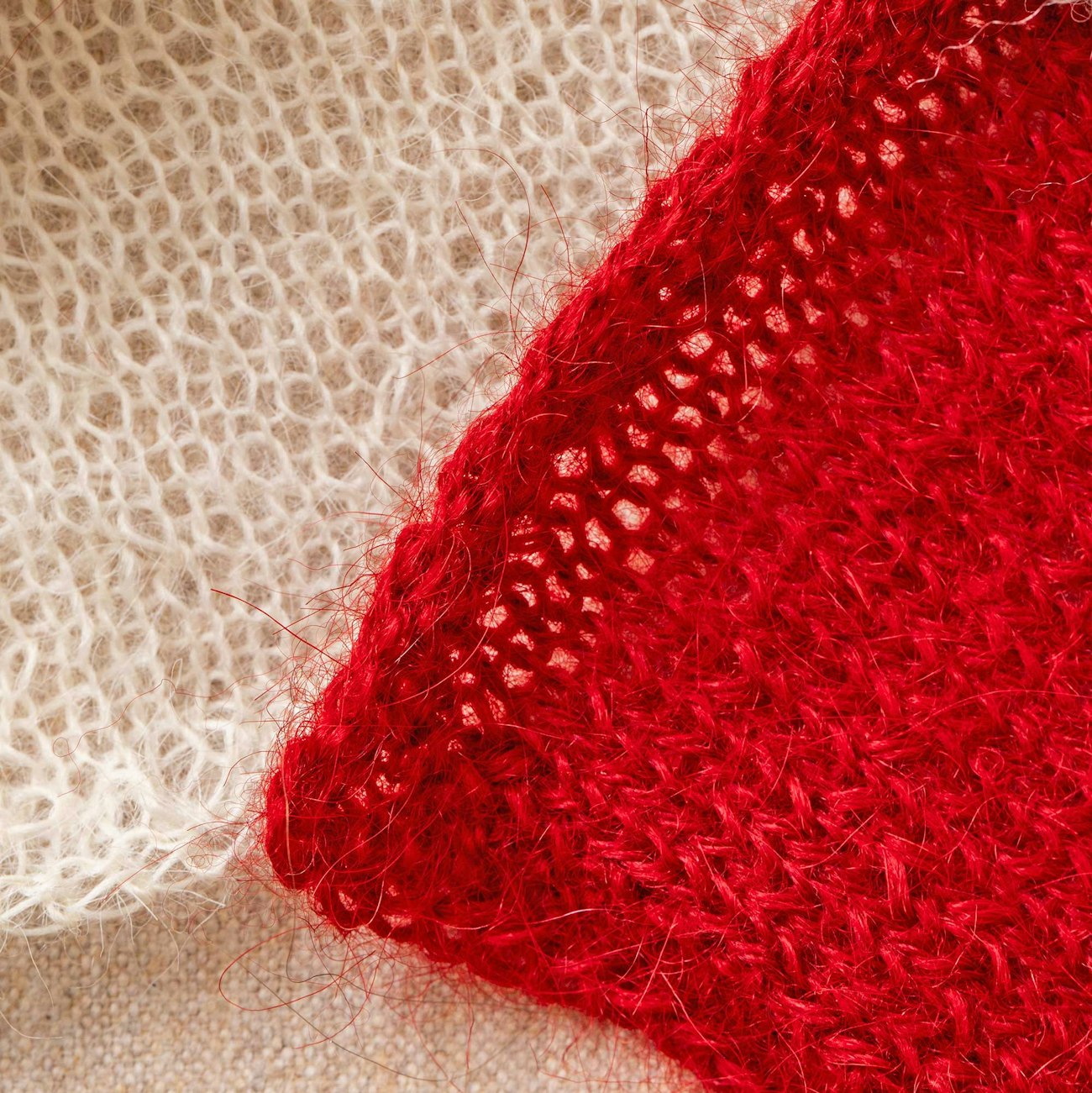Subscriber Exclusive
Icelandic Laceweight: Exploring Two Yarns from Hélène Magnússon
The new issue of Farm & Fiber Knits mentions two Icelandic laceweight yarns—I cast on to learn more.
The new issue of Farm & Fiber Knits mentions two Icelandic laceweight yarns—I cast on to learn more. <a href="https://farmfiberknits.com/iceland-s-yarn-secret-an-unexpected-treasure/">Continue reading.</a>
https://farmfiberknits.com/cdn-cgi/image/format=auto/https://www.datocms-assets.com/101500/1726777063-lopi-lace-header.jpg?auto=format&w=900
As I read the premier issue of Farm & Fiber Knits magazine, I was intrigued to learn that there are not one but two fairly new Icelandic laceweight yarns developed by French-Icelandic knitwear designer Hélène Magnússon. As she was working to revive Icelandic lace-knitting traditions, she needed modern yarns inspired by the fine Icelandic handspun of the past. Over several years, Hélène developed the yarns, for which she hand selects the first fleeces of Icelandic lambs. The fiber is processed and then spun into two different laceweight yarns: Love Story Einband (single-ply) and Gilitrutt Tvíband (two-ply).
What would these yarns feel like on the needles? I decided to do some swatching to find out.
 An Icelandic sheep sporting the tog, the long outer coat of fiber. Photo by Julie Karen via Unsplash
An Icelandic sheep sporting the tog, the long outer coat of fiber. Photo by Julie Karen via Unsplash
Delicate Yarn from Mighty Fleece
Once I had these yarns sitting on my worktable and gave them a squish, I was surprised at the amount of bounce in both the single and the two-ply. The more I touched the little mounds, the more I wanted to work with them! Icelandic sheep—in Iceland and beyond—are known for having fleeces that contain a mix of both long, silky hair called tog, and a short, soft inner coat called Þel. The complex fleece structure is perfect for sheep in Iceland; the long hairy fibers are water-repellant, while the cozy inner coat creates an insulating layer that keeps the sheep warm. Both of these fibers are blended together to create most Icelandic yarns, and finding a mill that could spin a fine laceweight from the unique fiber was a challenge for Hélène. Finally, she found a mill in Italy that could create the laceweight yarns she needed.
 From left to right: A full Icelandic lock, tog, and Þel.
From left to right: A full Icelandic lock, tog, and Þel.
Soft, Yet Hardy
Combining the inner and outer coats of the sheep gives the yarn a stronger structure that you don’t see in most laceweight yarns. I often work with a yarn that feels great but loses its perfectly blocked shape quickly, or it drapes so well that the shape and definition of the pattern gets lost when the shawl is worn. I don’t see that happening with these two yarns. The tog fibers give the yarn this stronger structure, while the Þel gives the yarn its bounce and softness.
Comparing heavier-weight, single-ply Lopi yarns with laceweight, single-ply Love Story Einband, I see that the twist is a bit different. The laceweight has a higher twist to keep the smaller amount of fibers safely spun together. The blend
SUBSCRIBER EXCLUSIVE
As I read the premier issue of Farm & Fiber Knits magazine, I was intrigued to learn that there are not one but two fairly new Icelandic laceweight yarns developed by French-Icelandic knitwear designer Hélène Magnússon. As she was working to revive Icelandic lace-knitting traditions, she needed modern yarns inspired by the fine Icelandic handspun of the past. Over several years, Hélène developed the yarns, for which she hand selects the first fleeces of Icelandic lambs. The fiber is processed and then spun into two different laceweight yarns: Love Story Einband (single-ply) and Gilitrutt Tvíband (two-ply).
What would these yarns feel like on the needles? I decided to do some swatching to find out.
 An Icelandic sheep sporting the tog, the long outer coat of fiber. Photo by Julie Karen via Unsplash
An Icelandic sheep sporting the tog, the long outer coat of fiber. Photo by Julie Karen via Unsplash
Delicate Yarn from Mighty Fleece
Once I had these yarns sitting on my worktable and gave them a squish, I was surprised at the amount of bounce in both the single and the two-ply. The more I touched the little mounds, the more I wanted to work with them! Icelandic sheep—in Iceland and beyond—are known for having fleeces that contain a mix of both long, silky hair called tog, and a short, soft inner coat called Þel. The complex fleece structure is perfect for sheep in Iceland; the long hairy fibers are water-repellant, while the cozy inner coat creates an insulating layer that keeps the sheep warm. Both of these fibers are blended together to create most Icelandic yarns, and finding a mill that could spin a fine laceweight from the unique fiber was a challenge for Hélène. Finally, she found a mill in Italy that could create the laceweight yarns she needed.
 From left to right: A full Icelandic lock, tog, and Þel.
From left to right: A full Icelandic lock, tog, and Þel.
Soft, Yet Hardy
Combining the inner and outer coats of the sheep gives the yarn a stronger structure that you don’t see in most laceweight yarns. I often work with a yarn that feels great but loses its perfectly blocked shape quickly, or it drapes so well that the shape and definition of the pattern gets lost when the shawl is worn. I don’t see that happening with these two yarns. The tog fibers give the yarn this stronger structure, while the Þel gives the yarn its bounce and softness.
Comparing heavier-weight, single-ply Lopi yarns with laceweight, single-ply Love Story Einband, I see that the twist is a bit different. The laceweight has a higher twist to keep the smaller amount of fibers safely spun together. The blend[PAYWALL] of fibers creates a beautiful, delicate halo that is less intense than mohair.
The Gilitrutt Tvíband two-ply has a gentler twist than most two-ply yarns, giving it a light feel. Because of the plied structure, this yarn has less halo.
 You can see the gentle amount of halo on the single strand of Love Story Einband yarn.
You can see the gentle amount of halo on the single strand of Love Story Einband yarn.
And Now, the Swatching
Whenever I try out a new yarn, I sample it with size 2 (2.75 mm) needles—my favorite size. This is the middle of the range I consider lace needle sizes, 0 to 4. The swatch gives me a solid baseline to decide how I want to use the yarn. For my knitting style, the Love Story Einband would benefit from using a smaller needle size, as I had to keep a tighter tension on my stitches in order to keep them even. Previous singles yarns I have worked with tend to slant a particular direction because the twist in the yarn causes each stitch to twist a bit. I was pleasantly surprised at the lack of bias or twist in my stitches. This yarn would make a wonderful heirloom shawl.
The Gilitrutt Tvíband two-ply makes a comfortably dense fabric on size 2 needles. With its range of 20 colors, it would be a wonderful lightweight option for a colorwork project or a hardy lace pattern on larger needles. The tog fibers would give the stitches extra pop, while the Þel fibers would give it a lovely hand that I find to be softer than Shetland yarns.
 Katrina knitted basic swatches on size 2 needles to create a baseline for future pattern ideas.
Katrina knitted basic swatches on size 2 needles to create a baseline for future pattern ideas.
Hélène Magnússon’s laceweight yarns can be found on her website, icelandicknitter.com. Now I am off to research Icelandic lace patterns to see what these modern yarns can do when combined with a bit of history!
Happy Knitting,
–Katrina
Learn more about Icelandic sheep and wool and Lopi yarns in “The Land of Fire and Wool,” by Leslie Petrovski, in the premiere issue of Farm & Fiber Knits magazine.
 An Icelandic sheep sporting the tog, the long outer coat of fiber. Photo by Julie Karen via Unsplash
An Icelandic sheep sporting the tog, the long outer coat of fiber. Photo by Julie Karen via Unsplash  From left to right: A full Icelandic lock, tog, and Þel.
From left to right: A full Icelandic lock, tog, and Þel. 

 You can see the gentle amount of halo on the single strand of Love Story Einband yarn.
You can see the gentle amount of halo on the single strand of Love Story Einband yarn.  Katrina knitted basic swatches on size 2 needles to create a baseline for future pattern ideas.
Katrina knitted basic swatches on size 2 needles to create a baseline for future pattern ideas.